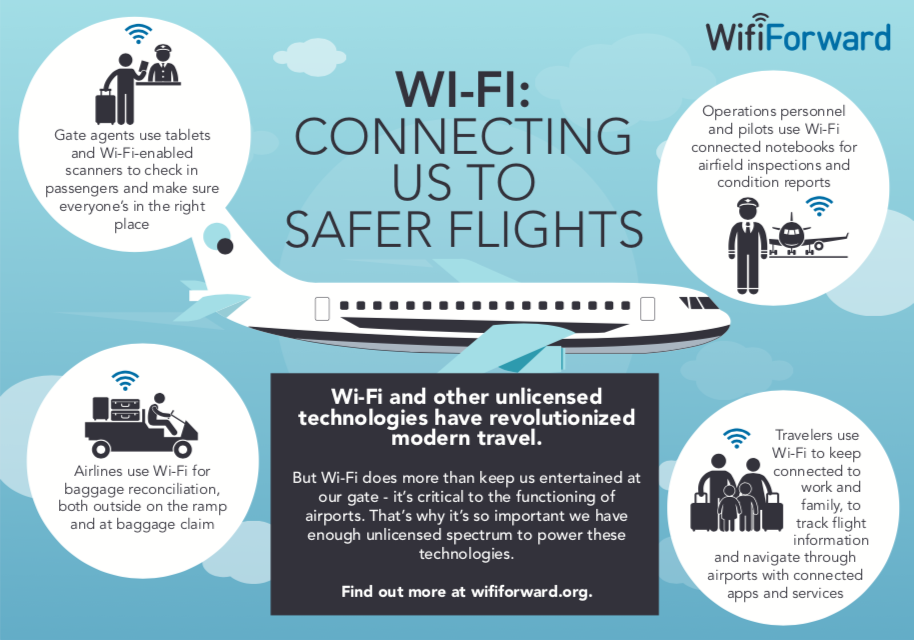Spring has finally sprung! For many, this means it’s Spring Break — a time where students and adults alike spend a lot of time traveling. USA Today ranks this season as one of the top ten busiest times to travel, with many flying to tropical destinations for some R&R.
Wi-Fi has become an integral part of travelers’ airport experiences. According to a study by Boingo, airport Wi-Fi users consume an average of 44 MB of data per session. More than half connect to Wi-Fi via phone, while 24% use tablets and 21% use laptops. What travelers do on their devices also varies, from reading the news to streaming movies, shows, music and sports.
But airport Wi-Fi is used for much more than binge-watching or checking work emails at the gate. Increasingly, passengers are turning to Wi-Fi connections and their mobile devices to support their travel logistics and airport experience. Travel apps abound: ParkingPanda and SpotHero expedite airport parking, FlySmart and GateGuru map out airport amenities like restaurants and restrooms, LoungeBuddy simplifies airport lounge access, and MyTSA provides checkpoint wait times. Likewise, airlines’ own mobile apps offer customers real-time updates on flight status, departure gate numbers, baggage claim numbers and more. For international travelers without cell phones or for passengers hesitant to burn through mobile data, airport Wi-Fi is essential to access all of these apps.
Wi-Fi is also critical to airport operations. Airlines use Wi-Fi for baggage reconciliation, both outdoors on the ramp and at baggage claim. Pilots and airline mechanics provide condition and airfield reports on Wi-Fi connected notebooks, while gate agents use tablets and Wi-Fi-enabled scanners to check passengers onto their flights. Likewise, gate agents, ground staff, baggage handlers, flight crews, and other personnel frequently communicate key information over Wi-Fi connections.
Wi-Fi does more than keep us entertained at our gate — it’s critical to the safe functioning of modern airports. This is just the beginning of the “connected airport.” In the future, airline travelers may use augmented reality to access 3D airport maps with customized directions to their gate or might video-chat with a gate agent to change flights instead of waiting in a long line. The possibilities for the Internet of Things in the airport are endless, but it is clear that Wi-Fi — and the unlicensed spectrum that it runs over — will provide the needed connectivity for it.

